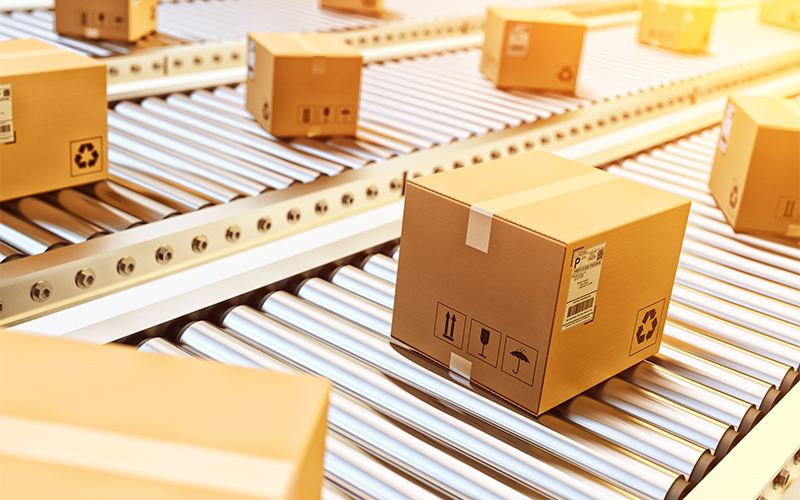Retail, CPG and Logistics
Supply Chain Management: Expediting supply chains with the Internet of Things
The Covid-19 pandemic wreaked havoc in the global supply chain of almost every industry. As people isolated themselves amidst lockdowns and restrictions, businesses had a difficult time bridging the demand-supply gap. The iconic pictures of empty supermarket shelves in the world’s richest economies were perhaps a sharp rap on our collective knuckles for not being prepared for a rainy day. Many businesses had to redesign their supply chains urgently, all the while making sure people were safe and government regulations were being followed. Technology came to the rescue, and IoT had a large role to play in this endeavour. Using IoT technology, supply chain management across businesses continues to become more efficient and less costly as we ease our way into a new normal.
It was close to 25 years ago when technology pioneer Kevin Ashton first coined the term - internet of things (IoT). IoT can be defined as a network of electronic devices that can receive and send data through software sensors and internet connectivity. Knowingly or unknowingly, IoT has become an integral part of almost every aspect of our lives. By using IoT technology in supply chain management, goods can be tracked easily, routes can be optimised leading to fuel efficiency, and inventory can be better managed. IoT technology has been helping businesses lower business costs, improve service and overall efficiency of the supply chain.
As per a 2020 McKinsey study, 75 per cent of the businesses that were assessed, had experienced issues with manufacturing, distribution and with getting supplies on time. The study also revealed that almost 85% of businesses suffered because of the supply chain being insufficiently digitised. Recognising this shortfall, the smart manufacturing industry has been made a focus area, by the industry, and during 2021-2029 a growth of USD 250 billion- USD 685 billion is expected. IoT-driven technology is among the main forces behind the growth of the smart manufacturing industry.
Industrial IoT (IIoT): This is a network of smart sensors and devices that are connected to form systems to collect, monitor, exchange and analyse data to enhance industrial and manufacturing processes. These devices can collect data from more points of interaction and improve shipment tracking through communications between machine-to-machine (M2M) and machine-to-people (M2P). Smart machines are proficient at exchanging information, and that can help businesses make decisions faster and more accurately.
In the manufacturing sector, IIoT plays key roles in quality control, supply chain tracking, sustainable and green practices, and overall efficiency of the supply chain. IIoT is also key to processes such as asset tracking, predictive maintenance (PdM), energy management and enhanced field service.
For example, perishable goods need temperature monitoring to maintain quality. Being able to manage such details during transit from a centralised location enables every part of the supply chain to be efficient. Waste can be minimised and processes can be optimised. Even businesses that have not used supply chain logging earlier can quickly set up their monitoring systems using IoT technology.
Wireless sensor networks (WSNs): The sensors in these networks monitor and record environmental conditions and transmit this data between the cloud and IoT and among IoT-driven devices.
Machine learning (ML) and artificial intelligence (AI), big data analytics, and 5G networks are the other technologies driving the smart manufacturing industry, and subsequently boosting supply chain management.
IoT does not require complex infrastructure
High costs of hardware and devices are usually a significant deterrent to adopting supply chain analytics. The landscape is slowly changing with the introduction of less costly IoT-based data keepers. The need for expensive equipment, signal towers, or any other tools are completely eliminated by using IoT.
Attached easily to shipments, IoT devices can measure a variety of markers such as temperature, humidity, shock, tilt angle, and lots more to ensure goods in transit are safe and in good condition. Businesses can use all the data available to record, analyse and make any decisions needed to change routes or any other process.
Data collected over a period of time is used to optimise routes and get the most out of a delivery route. Future routes can be planned with greater efficiency with data collected by IoT sensors and devices.
IoT allows better planning and forecasting
Traditional supply chain analytics was more about control and risk avoidance but with IoT, data is available in real-time, at any time. Manufacturers, distributors, suppliers, and retailers can plan better. The data allows them to take risks and use opportunities to their advantage. Demand, supply, and sales can be forecast better. Using cloud-based networks, constant shipment tracking data allows for better risk and inventory management, fewer disruptions, and less damage. Any address error can also be detected and managed from a distance. If needed, shipments can be stopped or returned at any point too.
IoT reduces maintenance and fuel costs
Optimising routes reduces fuel consumption to some extent. However, driving habits decide fuel and maintenance costs too. With IoT technology, businesses can keep track of driving habits and adjust as necessary. Using IoT technology, businesses can also track engine performance, oil changes, brake, and tyre quality, all of which can help manage maintenance problems. Poor driving habits can be remedied on time.
Going beyond human errors, IoT sensors can also identify unforeseen obstacles, such as machine failure, resource leaks and inefficiencies that could hinder smooth operations. Observers of different stages of a supply chain can be duly alerted and precautionary steps taken.
IoT makes warehouse maintenance easier
IoT technology is slowly being adopted to manage warehouses too. Locating items has become simpler and more agile*. Further, warehouse inventory is managed better too.
IoT is the future of supply chain management
Digitisation of the supply chain is the only profitable way forward for both hardware and software businesses. Pandemic-triggered disruptions can be repaired by taking advantage of the insights gained in the last two years and adopting new technological systems, advances in IoT being a prominent one. IoT-driven devices and systems can continue to boost speed and reliability of supply chain systems. Agile businesses have and will quickly adapt to changes leaving the rest behind.
* For organizations on the digital transformation journey, agility is key in responding to a rapidly changing technology and business landscape. Now more than ever, it is crucial to deliver and exceed on organizational expectations with a robust digital mindset backed by innovation. Enabling businesses to sense, learn, respond, and evolve like a living organism, will be imperative for business excellence going forward. A comprehensive, yet modular suite of services is doing exactly that. Equipping organizations with intuitive decision-making automatically at scale, actionable insights based on real-time solutions, anytime/anywhere experience, and in-depth data visibility across functions leading to hyper-productivity, Live Enterprise is building connected organizations that are innovating collaboratively for the future.






